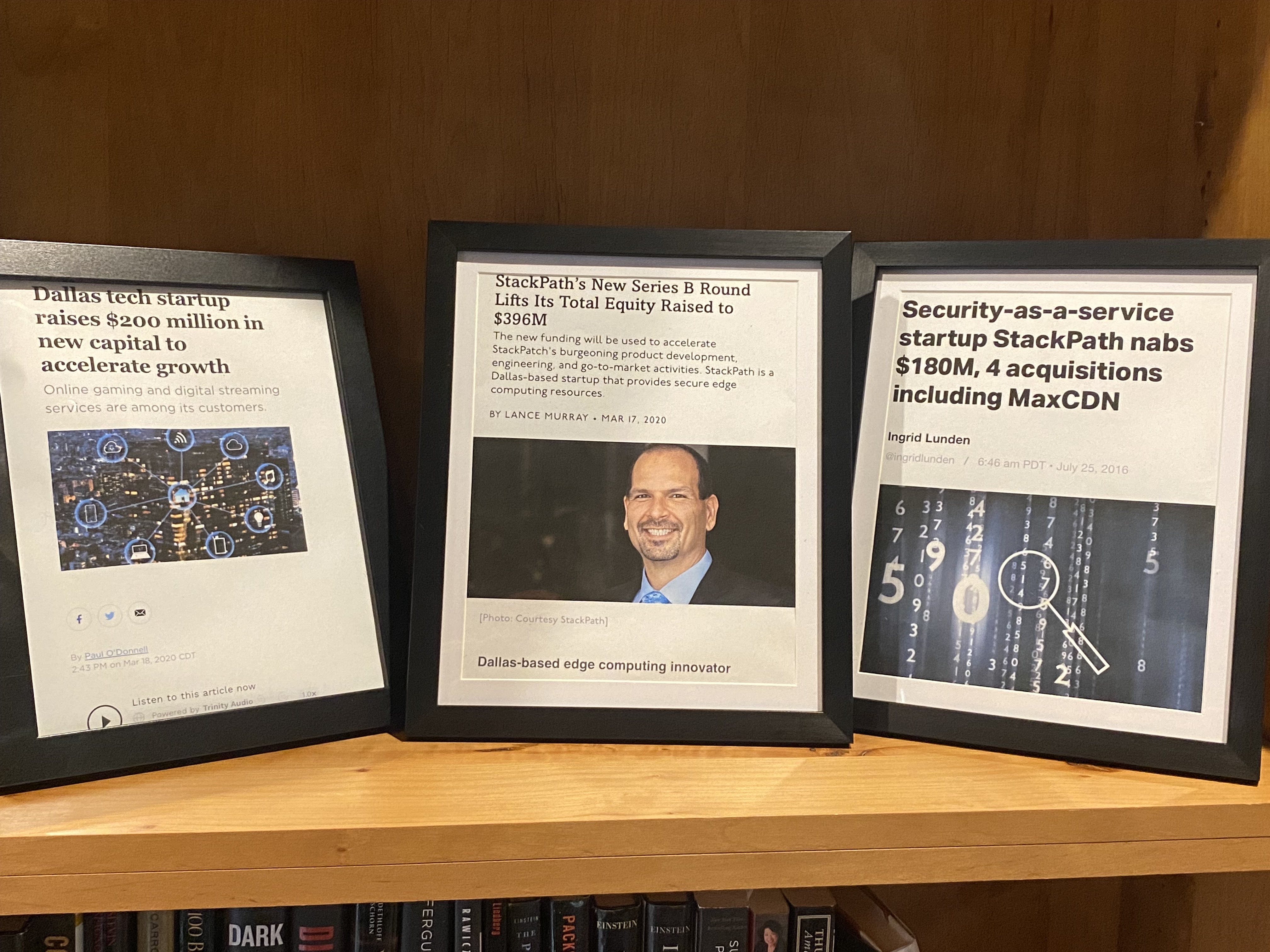Three Fundamental Funding Questions Founders Ask
Having taken companies from initial idea through successful exit, here’s some basic startup funding advice I give new founders.

Sitting here in my office and looking at the framed press clippings on a shelf about the substantial funding rounds raised by a startup I co-founded, it feels ironic to be writing that my rule of thumb about startup funding is, “Don’t raise unless you absolutely have to, and don’t raise more than you need.” But that’s the advice I still give to first-time entrepreneurs. The best part of my job running the Equinix Startup Program is I get to work with—and hopefully help—startup founders along their journeys as they turn ideas into businesses. Almost all these interactions at some point turn to the topic of raising capital. And almost all first-time founders ask some version of these three fundamental questions about startup funding:
- What are all the different types of funding rounds?
- How much should we raise?
- Who should we raise from?
Here is some broad guidance I give them on each of these topics:
1. What are the different types of startup funding rounds?
The different rounds of funding a company raises over time mark the different stages of its development:
- Pre-seed: Concept ideation, testing, product building (“Let’s see if we can turn this idea into a business.”)
- Seed: Product launch, initial users, product-market fit, key team in place (“Let’s put this out there and see what people think.”)
- Series A: Scalable business model, solid financials, revenue growth, established customer base (“Hey, this is turning into a legit business!”)
- Series B+: Top management team, strong operating history, stable revenue, rapid expansion (“The business we’ve created has taken off, and large investors and potential acquirers have taken note.”)

2. How much should we raise?
Most businesses at some point need to raise money to grow, but, as I’ve already said, it’s wise to raise capital only when you need it and only as much as you need. Here are some typical size ranges for each of the types of startup funding rounds described above (keep in mind that these are only rough guidelines, and every company’s capital needs will be different):
- Pre-seed: $100,000 to $2 million on an estimated valuation of $2 million to $10 million. Covers early employee salaries and other costs incurred while building and testing your product.
- Seed: $2 million to $5 million on a valuation of $10 million to $25 million. Funds additional staff, including positions like marketing, sales, HR and other roles that maybe weren’t necessary early on, as well as advertising and other cost-of-sales expenses.
- Series A: $5 million to $20 million on a valuation of $25 million or more. Funds a significant headcount increase and other resources needed to scale the company.
- Series B+: More than $20 million on a valuation of more than $100 million. Funds continued addition of resources necessary to scale and make the company a candidate for acquisition or IPO (if one of those is a path you choose).
3. Who should we raise startup funding from?
This, to me, is the most important question, which could be its own blog post. (Note to self: write a blog post about choosing investors.) Do not ever lose sight of the fact that whoever invests in your company will own a portion of it—so choose wisely! Here are the types of investors one would typically use for each of the different types of startup funding rounds (again, these are general guidelines):
- Pre-seed: Friends and family, founders, micro-VCs, accelerators. These people are investing in you as much as they are in the company. They believe in your vision and want to see it come to fruition. This is often a make-or-break point for a startup, and many don’t make it this far.
- Seed: Angel investors, early-stage VCs. Now that your company has a product (or will soon), “professional” investors may begin to show interest. They typically view their investment as a long play, betting on your company’s long-term potential rather than quick results. They are often hands-off, giving you space to grow and develop.
- Series A VCs, super angels: You’ve now made it to the big leagues! These are the investors who will help your company scale and write big checks to make that happen. But, with greater investment comes greater scrutiny, so be prepared to see them get involved and question you if they feel that progress is too slow.
- Series B+, late-stage VCs, investment banks, hedge funds, PE firms: These are large, institutional investors whose support could help push your company over the finish line. They are often focused on short-term return on their investment and tend to have low tolerance for anything that could impact that return. They get much more involved in the company’s performance than the others—this can be both positive and negative—so be prepared.
There’s a fourth startup funding question I get quite often from budding founders: Do I have to raise capital? The answer to this bonus question is no. I know plenty of companies that bootstrapped, grew organically and did great overall. I also know companies that raised significant capital only to crash and burn. However, if the goal is to be acquired, go public, or scale significantly, some sort of outside investment greatly increases chances of success—though it certainly does not guarantee it.
The bottom line: be flexible about your startup funding strategy. Plans change, businesses pivot. Without a doubt, there will be things that blindside you as you build your company—no matter how well prepared you might be. Taking a hard line against raising capital could prove detrimental to your success, but so could getting caught in the trap of thinking that you have to raise, and seeing large funding rounds as a measure of success without considering their necessity.
Are you a founder with an interesting story to tell? I’d love to hear it! Hit me up at jleaverton@equinix.com or on LinkedIn.

Ready to kick the tires?
Use code DEPLOYNOW for $300 credit